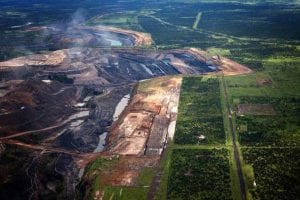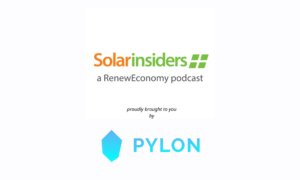Grid connections for major renewable and storage projects are about to get cheaper and easier, after the biggest overhaul of how energy projects hook into the National Energy Market (NEM) since 2018.
Connection rules are the highly technical standards that stipulate who can connect, how and when and Australia – largely because of its long stringy network and its traditional dependence on coal and gas – is known to have the among the toughest rules in the world.
The changes announced on Thursday by the Australian Energy Market Commission, the body charged with signing off on the rules of the market, are being released in two parts.
The first is focused on speeding up connections and will apply from August this year, and finally recognise that inverter-based projects such as solar, wind and batteries are now prevalent in the NEM and can provide different services than, say, a gas power plant.
The second part is focused on security and the draw of big energy users, with a particularly focus on AI-oriented data centres that can draw huge loads, and need to have rules set around their operation to avoid an outsized impact on the grid. Consultation on this is open 19 June.
The headline outcomes are to infuse the connections process with some much needed flexibility, by removing roadblocks currently making grid-forming inverters difficult to connect, and bring down the cost and length of time for a connection, the AEMC says.
Small projects that won’t have much impact on the grid if they drop out – less than 30 megawatts (MW) on the mainland and 7MW in Tasmania – will be simpler to connect, and connection rules will apply at a project level rather than by who owns them.
For example, currently a synchronous condenser operated by a participant registered as a generator must follow a specific rule for connecting to the grid, but a stand-alone synchronous condenser doing the same job but operated by a transmission company does not.
AEMC chair Anna Collyer says the reforms will accelerate Australia’s energy transition while maintaining system security.
“This is the most significant modernisation of the NEM technical connections standards since 2018, coming at a critical time when the pace of connections needs to accelerate dramatically to meet Australia’s renewable energy targets,” she said in a statement.
“With renewable energy projected to triple by 2030 and utility-scale batteries to increase fivefold in the same period, these reforms will help reduce connection bottlenecks while maintaining system security.”
Good riddance to hated delays
Grid connection delays are still a bugbear for renewable energy developers, even though many are now saying planning processes are not their main bete noir.
No grid specialists from developers were willing to talk about the changes on the record, some citing the fact they’d need some days to get their heads around the hundreds of pages of documents outlining the first package of reforms alone.
But many have been happy to talk about their beef with the process in the past.
Last year, Neoen Australia chief financial officer Tony Ng said a connection application process that took 100 days in 2017 now takes 300 to 400 days, “due to additional requirements which are sometimes more bureaucracy than engineering.”
And earlier this year, Neoen again said the grid connection rules for inverters were slowing the process for its 238 MW / 477 MWh Blyth battery north of Adelaide, due to its decision to use separate suppliers for the battery components and power control systems and the inverters.
In response to questions today about the reforms, a Neoen representative said the company didn’t expect the changes to have a big impact on how it designs, connects or builds projects.
“We have an excellent team of in-house experts with decades of experience in grid connections and a strong understanding of the market, and who are well-versed in working around changes. It is partly why Neoen has maintained a strong record in delivering our projects,” the statement said.
Recently, one senior renewables developer detailed how painful the process is at the Wind Energy Forum in Melbourne.
“Grid connection is hard and long, very, very difficult, very costly,” he said during a panel session earlier in May.
“I think it is hard for a reason, because it’s a really complicated process… 20 megawatts certainly is as much work as 100 or 200 or 500.”
Theys said they got one project through the process in just 10 months, but it could have been quicker as most of the period was “waiting”.
“I think that’s just because there’s so many of us out there who are trying to connect, and we’ve got a resource issue. Sure, the issues are complicated, but at the end of the day, there’s people in this room who will happily run it through a model pretty quickly, so it can be done. We just need the resources to do it,” he said.
A decade ago there were only a “handful” of connection requests by projects using a much more limited range of technologies and systems, the AEMC says in the sheaf of documents explaining its reforms.
Today, there are hundreds of connection applications from a range of project types. Combine that with more complex system security needs and a shortage of power engineers, and the result has been delays of the ilk Ng complained about last year.
To give an idea of the scale of connection requests, data from the Australian Energy Market Operator (AEMO) in February showed a surge in registrations for wind, solar and battery projects in the last six months of 2024.
There were 1.7 gigawatts (GW) of new projects registered in the December quarter alone, taking the total since 1 July to 5.2 GW – more than double the previous 12 months.
The data centre issue
The second tranche of reforms will look hard at large energy users with a particular focus on data centres driven by AI.
“The rise of artificial intelligence is driving unprecedented demand for data centres in Australia, with some facilities potentially requiring as much electricity as small cities,” Collyer said.
“Package 2 proposes new standards to ensure these facilities can respond appropriately during power system disturbances and don’t inadvertently make problems worse during system events.”
The AEMC pointed to an incident in the US recently where 60 data centres using 1.5 GW of power disconnected simultaneously during a system disturbance.
The shape of those connection reforms will be interesting to watch, given the data centre sector has made it clear their priority is their customers – not the grid.








